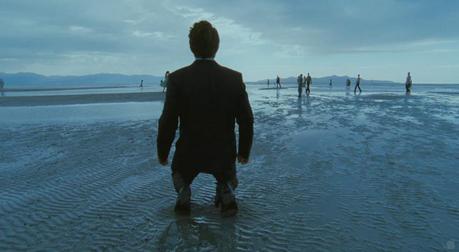With the advent of sound, the human voice became a vital component of film. Dialogue was no longer relegated to cards on the screen and narrative devices could be birthed allowing for new glimpses into unknown worlds of construction. As I’ve written previously, much of the greatness we attribute to early cinema filmmakers is in direct relation to how they approached sound throughout their careers.
Along with dialogue, came the voice of god: voiceovers and narration were employed to clarify and focus events at hand. Most of the time the voice is from a character who appears on screen at some point, but in some cases not. Still in use today by many of the most expensive productions as well as many of the lowest budgets, the voice-over is a tricky device that often dulls an otherwise interesting narrative. There are some filmmakers like David Gordon Green (whose earlier work employed it heavily) and Andrew Dominik (who used it beautifully in The Assassination of Jesse James by the Coward Robert Ford) that understand the complexity of imposing this type of presence, but for the most part it’s employed out of fear that the audience will not understand the unspoken narrative. The lineage of the voice-over has thus become identified with not trusting the audience, turning a story’s construction into a panel discussion.

One of the greatest users of voiceover as a progressive narrative device (and who most definitely influenced the likes of David Gordon Green and Andrew Dominik) is Terrence Malick. Since the beginning of his career, he has understood the musicality and substance of the human voice. Many critics and fans have given weight to his connection with philosophy and this very well may have attributed to his ability to utilize voice to such a degree. There is an understanding of the voice’s power throughout his films, and in many cases arranged voices are Malick’s solution to giving the narrative of images and sound a pseudo-frame.
There is a common story shared about making of Malick’s Days of Heaven, that it was long into the editing process before the director realized that what was missing was a voice-over.
He returned to filmmaking in the late nineties after a long hiatus and has since evolved his use of voice beyond the voiceover (though his use of them is quite revolutionary, uniting multiple voices as one) into territories of music and sound construction. Over the course of three productions (The Thin Red Line, The New World, The Tree of Life) he has utilized village choirs, opera and other sound creations, utilizing voice in ways both obvious and not.
This instills connections in place of physicality we are not allowed by the medium. There is weight and authority, as well as a deeply rooted intimacy. In The Tree of Life the voices wrap around you and offer something indefinable, yet tenable. They unify the many narratives of the story without dulling it down and bring one closer than ever to the ideas Malick has been deciphering since the beginning.

His willingness to take the process of discovery as far as necessary rather than participate in a pre-packaged, already understood construction allows placement of ideas together otherwise avoided and in doing so creates a vortex of time and space that is unlike anything we might otherwise observe. Critics often focus on his images, which are surreal with detail and put the beauty of existence before us. But there is a reason he allegedly sends volume level instructions (http://aphelis.net/terrence-malick-alleged-instructions-projectionists/) along with other directives to projectionists and places a placard in front of his films for home viewing that state a recommendation to play it as loud as possible.
His use of voice (and, in the broader sense, sound) is a door connecting ideas and experiences, allaying the silence in which we may feel truly alone.

